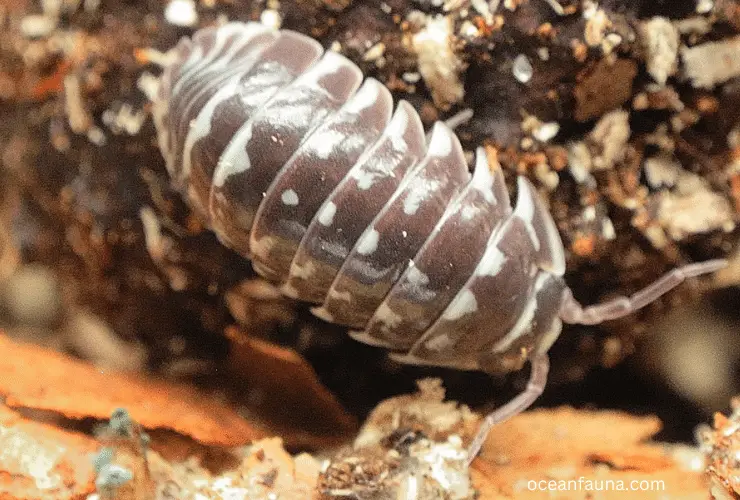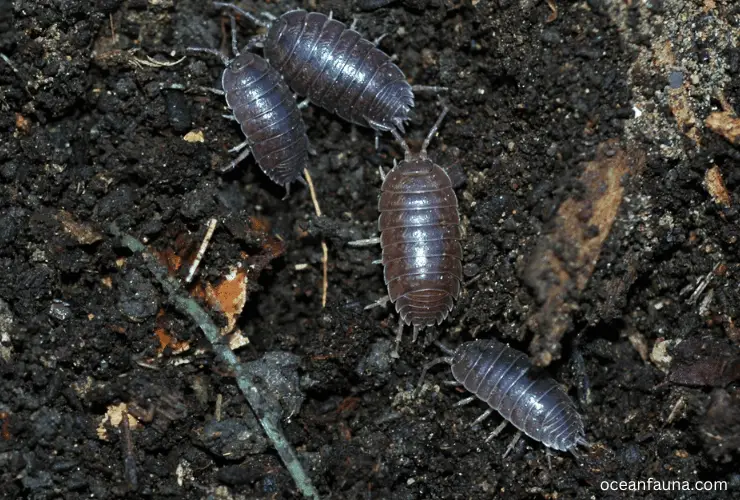If you look around, you’ll see tiny little bugs. And there is a 100% chance that isopods are among those. Be it terrestrial isopods or aquatic ones, both of them love to remain in groups and look for dark and moist environments to live in.
As isopods are tiny creatures, it’s quite surprising to hunt down and locate a darker space among the huge surroundings. So, the question is, how do Isopods Locate Appropriate Environments?
Isopods have antennas alongside compound eyes. These tiny creatures have 2 pairs of antennas on either side of their head. The antennas on the isopods work like a blind man’s stick. That means isopods use them to sense the environment around them. And that’s why they locate appropriate moist and dark environments among the huge nature using the 4 antennas.
The location-sensing procedure of isopods is quite interesting. They have quite unique systems that help them to interpret their world. Alongside the eyes, they use antennas to locate their environment.
So, if you’re one of the isopods’ enthusiasts and want to learn about their environment-locating techniques, you’ve arrived at the right place.
What Kind of Environment Do Isopods Prefer?
Isopods prefer dark, wet, and damp places. These places help the isopods to thrive. Besides, damp places are required for isopods to breathe because their gills can only help them breathe by intaking oxygen from damp and wet places.
You already know that isopods are found in almost all types of surroundings and eat almost anything. But still, they have a favourable living environment that helps them survive properly.
Isopods have good adaptability. And they can adapt to almost any environment. However, for living, isopods are always in search of dark and damp environments.

If you look at your surroundings, you’ll see isopods living around rotting vegetables, composts, or around dead organic animals. Above all, you’ll find one common thing. That is, the areas where the terrestrial isopods live are dark and damp.
Isopods prefer darker and damper environments for a special reason. And we’ll talk about that in the next part. Except for that, isopods use their antennae to search their wet and dark places.
Why Do Isopods Prefer Dark and Damp Environments?
Almost all living creatures have a favourable environment for living. And that’s the same case for isopods too!
The creator has created isopods in such a way that they can function best in a dark, gloomy, and damp environment. The organs and bodies of isopods have been designed to live in such an inappropriate environment from the point of view of human beings.
Although it might sound like an inappropriate environment, isopods have adapted well to this environment and have multiple antennas that help them receive and interpret information and thrive in this dark and damp world.
The dark, gloomy, and moist areas help isopods to breathe. Isopods have gills that help them to breathe. The land isopods and their gills need a moist environment for breathing as the gills can suck up oxygen from damp places.
So due to these reasons, isopods prefer to live in dark, gloomy, and damp places!
How Do Isopods Locate Appropriate Environments
Before we head on to learn how isopods sense their surroundings, imagine how you locate them!
Be it humans or other animals, everyone locates their environment through their eyes and uses their ears or nose to listen or sense textures. Well, this is also the same case for isopods, but the difference is that isopods use their antennae to sense and connect with obstacles around them.
Isopods use their 2 pairs of antennas alongside their compound eyes to see and feel their surroundings. These antennas come in real handy to find suitable spots in the huge environment they live in.
How Do Isopods Assess Their Surroundings?
Isopods don’t use their antennae to sense their surroundings. Rather, they use them to determine the temperature and moisture in the surroundings and gather other necessary data to help them survive in the wild.
To locate the appropriate living environment, the first thing that isopods do is scan their surroundings. For this, they use their compound uses. They notice the light spectrum with the help of their eyes and scan the area surrounding them. Moreover, they also help to sense shadows and light.

On top of helping to sense the light spectrum, isopods use their compound eyes as protective tools too! When they sense any danger, they convert their bodies into round balls.
Isopods use their compound eyes and antennas as protective tools. So in the dark, it sends a signal; from that, isopods can know when they can come out in the open spaces.
How Do Isopods Locate Their Environment?
Isopods rely heavily on their antennas. As they’re tiny bugs and normally don’t come out in the light, those antennas tell them when to move and where to move.
Isopods really need to find a moist or wet environment for breathing and survival. That’s why antennas are highly important for them. If somehow the antennas get damaged or don’t work, isopods will die!
Isopods mainly use their antennae for two main purposes. The first one is when they need to find a wet or moist area. A moist or wet environment is needed for the breathing of terrestrial isopods.
So, isopods use their antennas to find those environments. And the second one is when isopods need to locate or find out a dark environment enriched with food. As you already know, isopods prefer to live in dark and wet environments; they use their antennae to locate the appropriate environment.
The antennas of isopods are extremely crucial for the survival of tiny creatures. They have a total of 4 antennas. Among them, two are large, and the other two are short.
There’s a crucial reason behind having antennas of different lengths. If the long ones get detached due to a predator’s attack or accident, in that case, isopods can survive and find their appropriate environment using the short ones.
So how do Isopods Locate Appropriate Environments? Well, simply saying, they use their antennas and their compound eyes. They always look for dark and wet places around your home or in potted plants, among the leaves and composts.
FAQ
How do Pillbugs sense their environment?
Ans: Pillbugs have 2 pairs of antennas (2 long and 2 short). They use the antennae to sense, feel and locate their appropriate living areas. They also use the antennas as a protective tool and sense the light spectrum.
How do isopods detect light?
Ans: Alongside 2 pairs of antennae, isopods have compound eyes. These compound eyes help them to detect the light spectrum from their surrounding environment. When they’re exposed to light, the eyes will send a signal; after that, isopods will turn into a ball.
How do isopods adapt to their environment?
Ans: Isopods have very good adaptability. That’s why they can live in almost any type of environment. However, isopods prefer wet and damp places because they have gills for breathing, and the gills must be kept moist. Or else they might die. Besides, if the isopods are submerged in water for too long, there’s a huge chance of them not surviving.
What temperature kills isopods?
Ans: Isopods prefer to live in warmer temperatures. They cannot withstand too many cold or freezing environments. The ideal temperature of isopods is between 0 to 23 degrees Celsius.
Conclusion
The lifestyle of isopods is truly fascinating. Even being tiny creatures, how they function and survive in the wild is unimaginable.
Isopods don’t always come near living beings. They always prefer to live in the wild and the jungles. They have no problem living in the wild as they almost eat anything. But talking about the living place, they look for dark and moist areas.
The reason behind the dark and damp place is that they need to keep their gills moist so that they can breathe. And as you’ve read so far, you now obviously know how isopods locate their appropriate living areas.
So that’s all! If anybody asks you how Isopods Locate Appropriate Environments, I bet you can now enlighten them, right?If you’ve any queries, do let us know by commenting below, and we’ll get back to you as soon as possible. Thank you!


2 thoughts on “How do Isopods Locate Appropriate Environments?”